
MODALS:CAN-CAN�T; HAVE TO-DON�T HAVE TO-MUST-MUSTN�T-SHOU LD-SHOULDN�T
MODALS:CAN-CAN�T; HAVE TO-DON�T HAVE TO-MUST-MUSTN�T-SHOU LD-SHOULDN�T (KEY INCLUDED) 3 pages-7 exercises
Level: intermediate
Age: 14-17
Type: worksheet

What do they have in common? (can)
Levels 1 & 2 - Read & circle. Choose only one answer. (eg. ladybug, bird, bee - They can fly.) Enjoy and Happy Easter to everybody!
Level: elementary
Age: 6-10
Type: worksheet

Can (permission): gap-filling � B&W version � teacher�s handout with keys � 3 pages � fully editable
A worksheet to practice the modal verb can used to give or ask permission. The teacher�s handout with keys and the B&W version are included. It�s completely editable / correctable, hope you can use it. Thanks for downloading and have a nice day!
Level: elementary
Age: 9-17
Type: worksheet

Must mustn�t Can can�t
Easy exercise. Pupils must complete using "must / mustn�t /can / can�t"
Level: elementary
Age: 7-17
Type: worksheet

MODAL VERBS - 5 (B&W included)
Second part of the modals to practice on "can, could, must, mustn�t, will, would, needn�t, don�t have to". Hope it helps. Have a nice day!
Level: elementary
Age: 12-17
Type: worksheet

You must / mustn�t /be careful(part1)
pupils will discover uses of must / mustn�t /be careful in different contexts ,some key lexis like dangerous/safe which they�ll use to fill in gapped sentences ,this part one & part two will include more practice , I wanted to download them in one sheet but it was too heavy
Level: elementary
Age: 9-17
Type: worksheet

Can-Could-Be able to
First introduction to "be able to" - formation, distinction between �could� and �was able to� and 2 reinforcement exercises
Hope you find it useful!
The apparent overlapping of shapes, sorts itself out when you download it :) And if you need a key, I�ll be glad to send it to you.
Level: elementary
Age: 9-12
Type: worksheet

Past Modal Verbs
A grammar guide and exercises to practise past modal verbs of deduction (must/ can�t/ might/ could HAVE) and criticizing should/ shouldn�t have).
Level: intermediate
Age: 13-17
Type: worksheet

Modals ( worksheet 1)
The workseet is about modals. There is a column which gives a full image of modal uses + exercises. Hope u find it useful. Warm hugs from sunny Morocco.
Level: intermediate
Age: 9-17
Type: worksheet

MUST or MUSTN�T (B&W + KEY included)
An exercise to practise MUST and MUSTN�T. Students have to complete the sentences with the affirmative or negative form. B&W version and KEY included. Thank you for all your nice comments. Have a nice Sunday! Hugs mada :)
Level: elementary
Age: 9-17
Type: worksheet

Traffic Signs and Rules-Must and Mustn�t
Matching traffic signs and rules. The use of must and mustn�t.
A (complete the sentences) test. I hope you like it.
Level: elementary
Age: 10-17
Type: worksheet

MUST MUSTN�T NEEDN�T
Students will study the grammar explanations and fill in the blanks with the correct words.
Level: elementary
Age: 7-17
Type: worksheet

VERB TO BE QUIZ
Hope u find it useful, thanks for sharing.
Level: elementary
Age: 8-14
Type: worksheet

SHOULD-SHOULDN�T
Grammar and exercises about should/shouldn�t. I hope you like it.
Level: intermediate
Age: 12-17
Type: worksheet

inviting
inviting /structure, rules and exercises
Level: intermediate
Age: 7-12
Type: worksheet
|

MODALS - SEMI-MODALS PRESENTATION PART 2/2
A COMPLETE, ILLUSTRATED PRESENTATION OF MODALS AND SEMI-MODALS. THE SECOND PART INCLDUDES 19 TRANSPARENCIES WITH RULES AND EXAMPLES OF THE FOLLOWING MODALS: SHOULD - OUGHT TO - WILL - WOULD - SHALL - NEEDN�T - BE ABLE TO - HAVE TO - NEED TO.
I DON�T KNOW WHY, BUT NOT ALL THE PAGES ARE DISPLAYED IN THE PREVIEW.
Level: intermediate
Age: 12-17
Format: PowerPoint

what can I do at school ? at home ?
this PPT is meant to help children understand the differece between can = capacity and can=permission
Level: elementary
Age: 10-11
Format: PowerPoint

MODALS FOR GIVING ADVICE
THIS PPT WAS MADE USING TOP GRAMMAR BOOK BY HELBLING TO TEACH MODALS FOR GIVING ADVICE, BESIDES THE USE OF BE BOUND TO AND BE DUE TO.
I HOPE IT�S USEFUL FOR ALL!
Level: intermediate
Age: 15-100
Format: PowerPoint

Philip�s driving lesson
Let your students be Philip�s driving instructor!!! Click, a bubble with a road sign in it appears.Students must react and give the instruction aloud as if they were the driving instructor.Click again to check and you get the written instruction.I hope your students will have a nice time.
Level: elementary
Age: 11-17
Format: PowerPoint

Would you like to...? use
Uses and examples of would you like to:
-invitations
- offers
-asking for something politely
Level: elementary
Age: 12-17
Format: PowerPoint

class rules game (can/must/mutsn�t) part 2
Part 2 of the class game
Level: elementary
Age: 7-14
Format: PowerPoint

VERB GAME
It�s a game that uses different categories, all of them related to verbs: Modals, irregular, definitions etc. It�s a funny activity do in a class. You will encourage students to learn more.
Level: intermediate
Age: 10-17
Format: PowerPoint

Must or have to
It�s a powerpoint to teach the difference between must and have to in a context
Level: elementary
Age: 10-17
Format: PowerPoint

Modal Verbs
Introducing / revising modal verbs.
Level: intermediate
Age: 13-100
Format: PowerPoint

PAST FORMS of MODAL VERBS
Past forms of the modal verbs and related expressions. Hope you�ll like it!
Level: intermediate
Age: 14-17
Format: PowerPoint

class rules game (can/must/mutsn�t) part 3
Part 3 of my class rules game, the last part will be uploaded tomorrow!!
Level: elementary
Age: 7-14
Format: PowerPoint

MODAL VERBS I: HAVE TO, MUSTN�T, DON�T HAVE TO
Students must decide which is the suitable modal verb to express obligation, lack of obligation or prohibition. This is the first part of three because of size limits.
Level: elementary
Age: 14-17
Format: PowerPoint

I should have known!
This is a power point I frequently use with my students in class to present the Past Modals. Hope you like it!
Level: advanced
Age: 12-17
Format: PowerPoint

Making suggestions with cartoons and exercises
This ppt is about making suggestions. There are nice cartoons and exercises. Enjoy!
Level: intermediate
Age: 11-17
Format: PowerPoint

Would you rather
That�s a simple and nice activity for discussion based on the game "Would you rather". The students are supposed to make a decision, and choose what�s better for them from the two options given. They have fun while practicing the modal and thinking how hard or easy life could be...
Level: intermediate
Age: 10-100
Format: PowerPoint
|
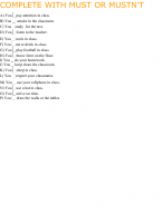
MUST OR MUSTN�T IN THE CLASSROOM
CHOOSE THE CORRECT OPTION
Level: elementary
Age: 3-100
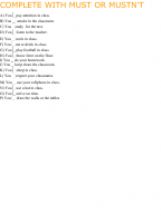
MUST / MUSTN�T
CHOOSE THE CORRECT OPTION.
Level: elementary
Age: 3-100
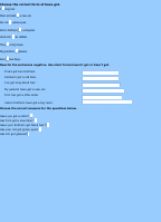
HAVE GOT or HAS GOT
Revise the use of the verb HAVE GOT.
Level: elementary
Age: 9-12
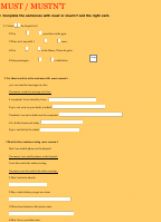
Must
Grammar revision on modals Must and Mustn�t
Level: intermediate
Age: 11-100

SAFETY TIPS FOR TOURISTS
THERE IS AN EXERCISE TO USE SHOULD/SHOULDN�T.
Level: intermediate
Age: 12-14
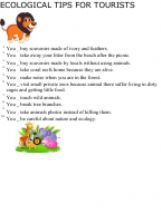
ECOLOGICAL TIPS WHILE TRAVELLING
There is an exercise to give advice how to be environmentally friendly while travelling.
Level: intermediate
Age: 12-14

GRADE 3 THEME 3 CAN-CANT
Animals and can-can�t exercises. (grade 2 theme 10-grade 3 theme 3)
Level: elementary
Age: 6-100

LEARNING A FOREIGN LANGUAGE
There is an exercise to use can/could/be able to discussing the topic "Learning a foreign language". An easy grammar guide is included.
Level: intermediate
Age: 12-14

LEARNING A FOREIGN LANGUAGE
There is a text about importance of homework and some tips to succeed in it with the task to choose SHOULD/SHOULDN�T.
Level: intermediate
Age: 12-14

TRAVELLING
There are some new words and travel tips to use SHOULD/SHOULDN�T.
Level: intermediate
Age: 10-12

LEARNING A FOREIGN LANGUAGE
There are fifteen sentenses about learning foreign languages to use CAN/COULD/BE ABLE TO.
Level: intermediate
Age: 11-14

TALENTS AND ABILITIES
HANGMAN ABOUT TALENTS AND ABILITIES
Level: elementary
Age: 8-100
|